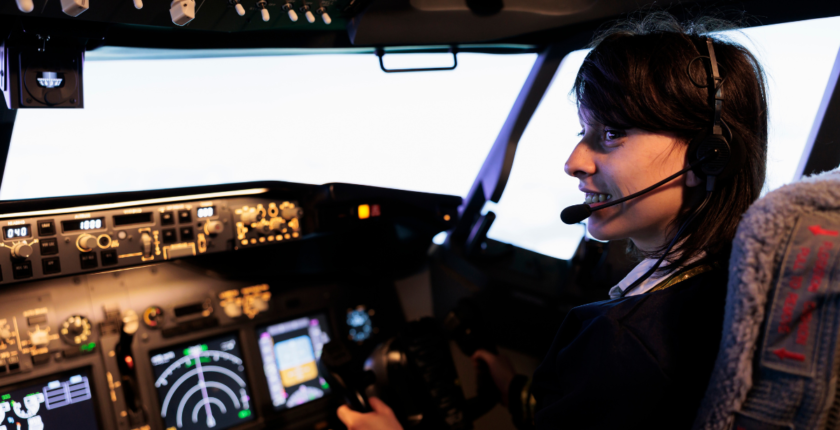The Most Spectacular Air Shows Around The World
The future of autonomous flying holds immense potential for transforming the way we travel and transport goods. With advancements in technology and artificial intelligence, autonomous drones and flying vehicles are expected to revolutionize industries like package delivery, agriculture, and even urban transportation. Companies like Amazon, Google, and Uber have invested heavily in developing autonomous flying systems that could dramatically improve efficiency and reduce delivery times. These systems are being designed to navigate complex environments safely and efficiently, and with continued research and development, we can expect to see a future where autonomous flying vehicles become a common sight in our skies. As regulations catch up with technology, the possibilities for autonomous flying are limitless, and it’s exciting to imagine the positive impact it could have on our daily lives.
Becoming an air traffic controller is a demanding yet rewarding career path that requires a high level of focus, attention to detail, and quick decision-making skills. To start on this career journey, individuals typically need a combination of formal education and on-the-job training. A bachelor’s degree in aviation, air traffic management, or a related field is often required, along with completion of a Federal Aviation Administration (FAA) approved air traffic control training program. Additionally, candidates must pass a rigorous selection process, including medical and psychological evaluations, as well as background checks. Once hired, new air traffic controllers undergo extensive training at an FAA academy and are then assigned to tower, en-route, or terminal facilities where they will continue to receive on-the-job training and mentorship. Continuous learning and staying up-to-date with industry regulations and technology advancements are essential to excel in this dynamic and critical profession.
Becoming an Air Traffic Controller is a challenging yet rewarding career path that requires a unique set of skills and training. To become an Air Traffic Controller, a candidate must typically have a bachelor’s degree in a related field such as aviation management or air traffic control. Additionally, candidates must complete a rigorous training program approved by the Federal Aviation Administration (FAA) which includes classroom instruction, simulation exercises, and on-the-job training. Strong communication skills, the ability to think quickly and make decisions under pressure, and attention to detail are all essential qualities for success in this role. Successful completion of the FAA Air Traffic Selection and Training (AT-SAT) exam is also a requirement for becoming fully certified as an Air Traffic Controller. The path to becoming an Air Traffic Controller may be demanding, but for those with a passion for aviation and a knack for multitasking, it can be a highly fulfilling and exciting career choice.
Becoming an air traffic controller is a highly rewarding career path that requires a combination of education, training, and various certifications. To start your journey to becoming an air traffic controller, you must have a high school diploma or equivalent and complete the Federal Aviation Administration’s (FAA) Air Traffic Collegiate Training Initiative (CTI) program at an approved institution. This program provides aspiring air traffic controllers with a strong foundation in aviation and air traffic control procedures. Additionally, candidates must pass the FAA’s pre-employment tests, including the Air Traffic Standardized Aptitude Test (AT-SAT), undergo a thorough background check, and complete a comprehensive training program at the FAA Academy in Oklahoma City. Upon successful completion of training, candidates must obtain an Air Traffic Control Tower Operator Certificate or an Air Traffic Control Specialist Certificate depending on the type of facility they wish to work in. By following these steps and maintaining a strong work ethic and dedication to safety and efficiency, anyone can achieve their dream of becoming an air traffic controller.
Air shows are a thrilling display of aviation skill and technology, drawing crowds from around the world to witness daredevil maneuvers and breathtaking aerobatics. Some of the most spectacular air shows take place in various locations across the globe, offering aviation enthusiasts the opportunity to see some of the world’s most talented pilots in action. From the world-renowned EAA AirVenture Oshkosh in the United States to the Royal International Air Tattoo in the United Kingdom, these events showcase a wide variety of aircraft, from historic warbirds to cutting-edge fighter jets and stunt planes. With performances ranging from high-speed passes and precision formation flying to gravity-defying loops and barrel rolls, these air shows never fail to amaze and inspire audiences of all ages. Whether you’re a seasoned aviation enthusiast or just looking for a thrilling day out, attending one of these world-class air shows is sure to leave you in awe of the incredible skill and precision of the pilots and their aircraft.

